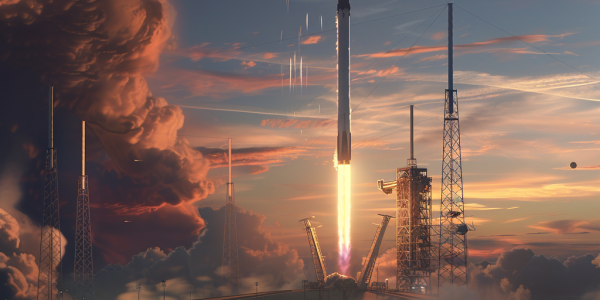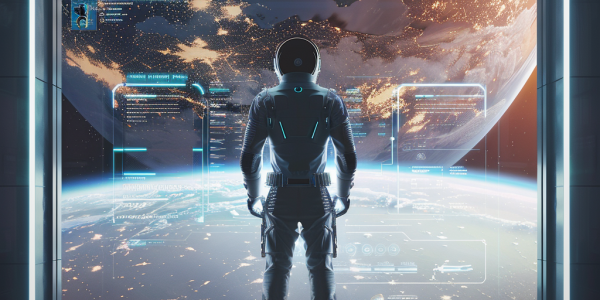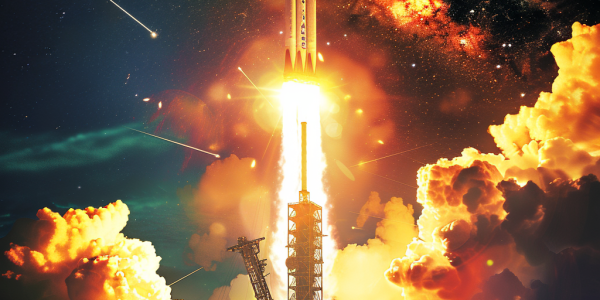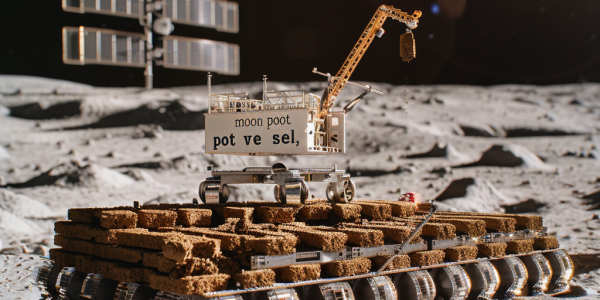SpaceX Celebrates 400th Falcon 9 Launch and Sets New Records
SpaceX celebrates the 400th successful Falcon 9 mission, achieving record-breaking milestones in space launches. With 16 launches in November alone, the company sets a new standard for efficiency and reusability, aiming for 15 more launches in December 2024. Discover how the Falcon 9 is revolutionizing space travel and enhancing global internet connectivity through Starlink.
Jared Isaacman Nominated to Lead NASA, Promising New Era in Space Exploration
President-elect Donald Trump has nominated billionaire entrepreneur Jared Isaacman to lead NASA, marking a pivotal moment for space exploration. Known for his successful private missions with SpaceX and his vision for a thriving space economy, Isaacman aims to inspire groundbreaking achievements in space science and technology. His leadership promises to reinvigorate public interest in NASA and expand humanity’s reach into the cosmos.
Ten Orbital Launches Scheduled This Week Highlighting Global Space Advancements
This week, the global space community is abuzz with excitement as ten orbital launches are scheduled, including significant missions from SpaceX, China, and India. SpaceX plans five Falcon 9 launches, enhancing global internet coverage with Starlink satellites. China’s active launch schedule continues with three missions, while India’s PSLV-XL prepares to deliver European spacecraft for solar observations. Anticipation builds for the launch of the European radar satellite Sentinel-1C, marking a pivotal moment in European space endeavors.
The Challenge of Establishing Accurate Timekeeping on the Moon
As humanity prepares for a sustained presence on the Moon, researchers are tackling the challenge of accurate lunar timekeeping. Recent studies reveal that time on the Moon flows differently than on Earth, influenced by gravitational forces and Einstein’s Theory of Relativity. The White House has called for a lunar time standard to support future missions and bases, highlighting the importance of precise timekeeping for navigation and communication in space exploration. This initiative is crucial for NASA’s Artemis missions and future endeavors beyond Earth.
NASA’s Voyager 1 Resumes Communication After Month-Long Glitch
NASA’s Voyager 1 spacecraft has resumed communication after a month-long glitch, reactivating its primary X-band transmitter. This historic mission, launched in 1977, continues to send invaluable scientific data from interstellar space, despite challenges from its aging systems and dwindling power supply. The successful troubleshooting highlights the ongoing commitment to exploring the cosmos and advancing our understanding of the universe.
DART Mission Marks Milestone in Planetary Defense Against Asteroids
NASA’s DART mission has revolutionized planetary defense by successfully demonstrating asteroid deflection capabilities. Launched in 2021, DART’s collision with Dimorphos on September 26, 2022, marks a significant step in safeguarding Earth from potential asteroid impacts. Experts emphasize the need for improved detection technologies and global collaboration to enhance our planetary defense systems.
China Advances Lunar Construction with Innovative Soil Bricks
Chinese scientists are pioneering lunar construction with plans to build a moon base using bricks made from lunar soil. This innovative method, known as in-situ resource utilization, aims to reduce costs and enhance sustainability for future space missions. Recent experiments and a robotic construction concept highlight the potential for automated habitat creation on the moon. As China advances its lunar exploration efforts, the implications for human colonization of celestial bodies grow increasingly promising.
Astronaut Captures Stunning ‘Space Fireflies’ Amid Satellite Concerns
Nasa astronaut Don Pettit captures stunning images from the International Space Station, showcasing the phenomenon of ‘space fireflies’—flashes of sunlight from SpaceX’s Starlink satellites. As SpaceX launches over 6,700 satellites to provide global internet access, concerns grow among astronomers about their impact on celestial observations. The balance between technological advancement and scientific integrity is crucial as discussions on mitigating satellite glare continue.
New Insights into FU Orionis: A Young Star’s Extreme Conditions and Planet Formation Challenges
A groundbreaking study using Hubble Space Telescope data reveals that FU Orionis, a young star 1,360 light-years away, exhibits extreme temperatures of approximately 16,000 Kelvin. This discovery raises critical questions about rocky planet formation in such harsh conditions. Researchers highlight the star’s rapidly spinning accretion disk, which creates intense heat and instability, complicating the development of Earth-like planets. These findings not only enhance our understanding of stellar evolution but also illuminate the intricate processes governing planet formation in the universe.
Asteroid 2020 XR to Make Historic Close Approach to Earth on December 4, 2023
On December 4, 2023, asteroid 2020 XR will make its closest approach to Earth, passing within 1.37 million miles. This massive asteroid, comparable to a football stadium and traveling at 27,500 mph, offers a unique opportunity for astronomy enthusiasts to observe a potentially hazardous near-Earth object. Live coverage will be available from the Virtual Telescope Project, and observers can use telescopes to witness this historic flyby. Stay updated for this exciting celestial event!










